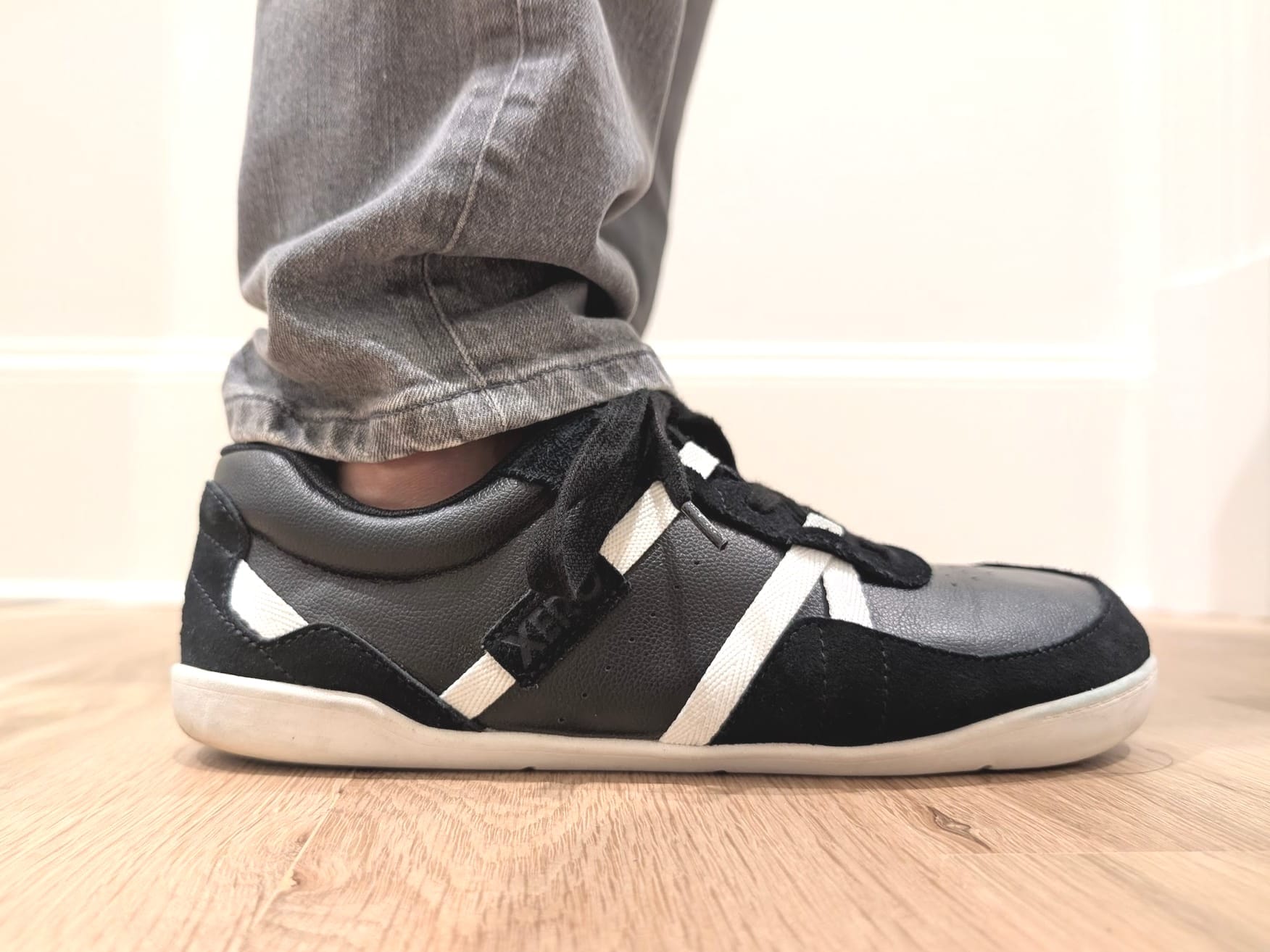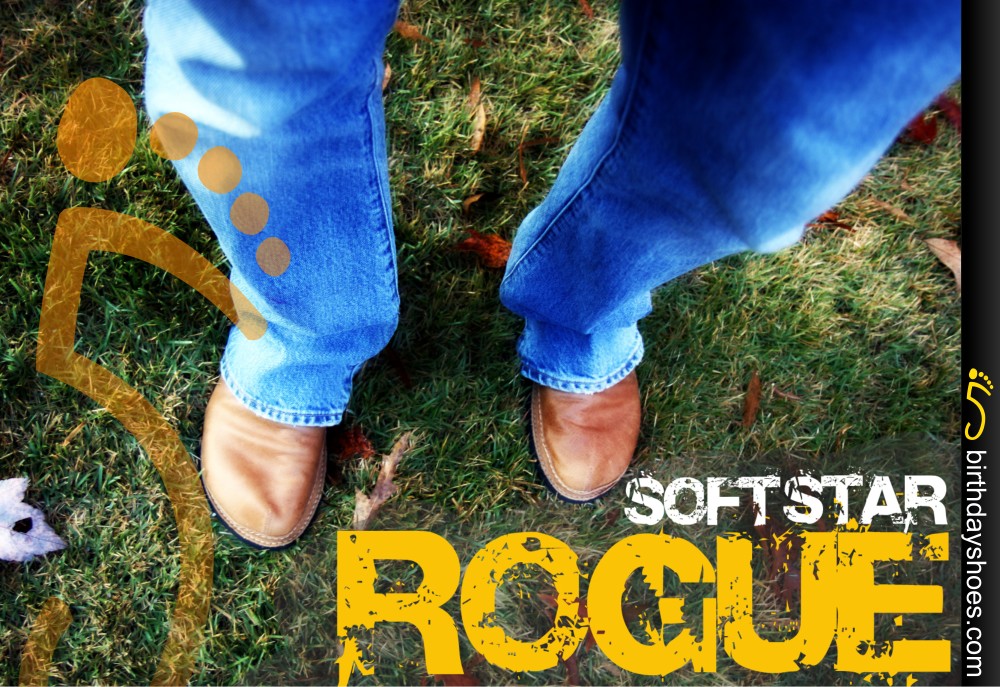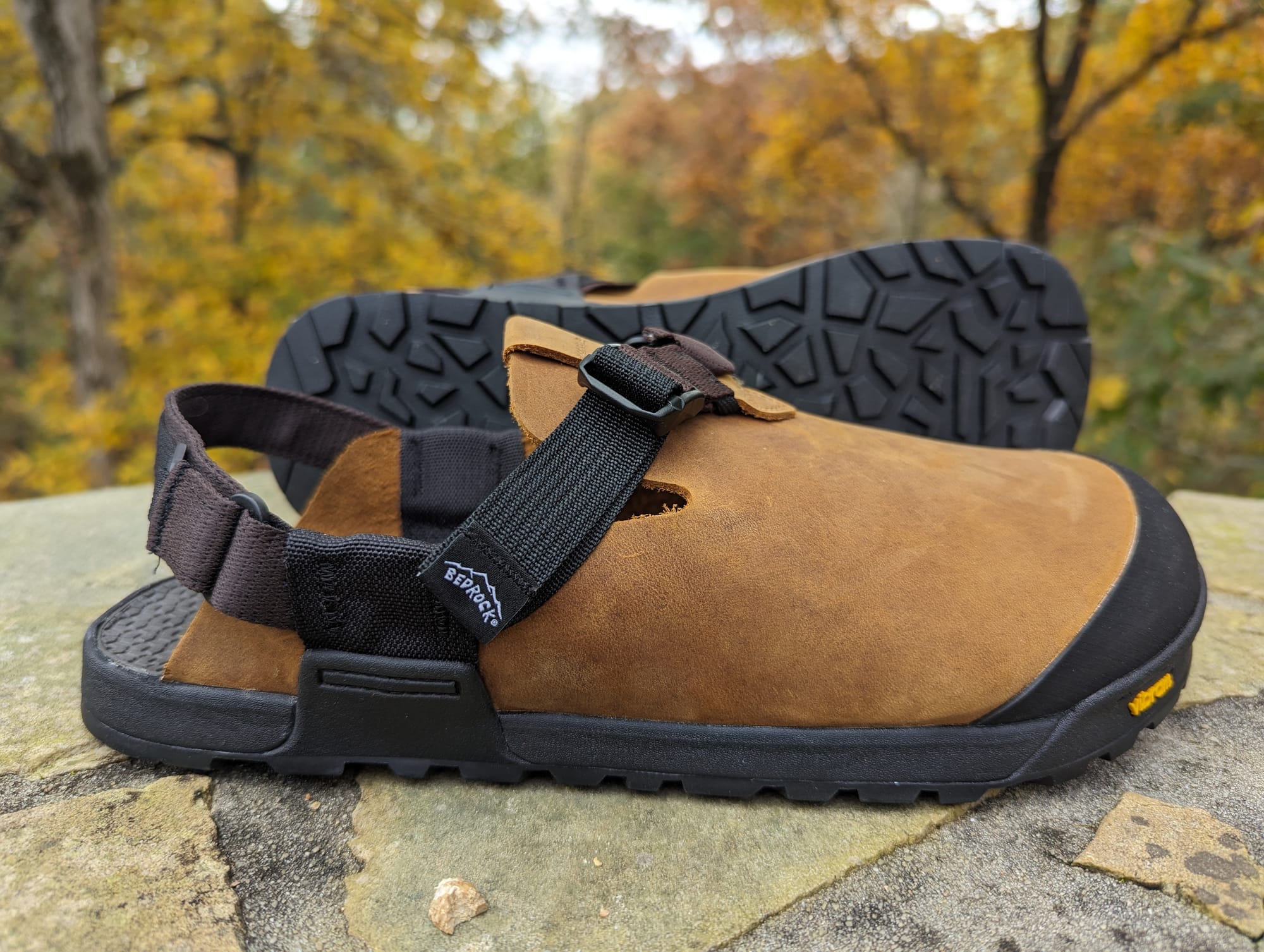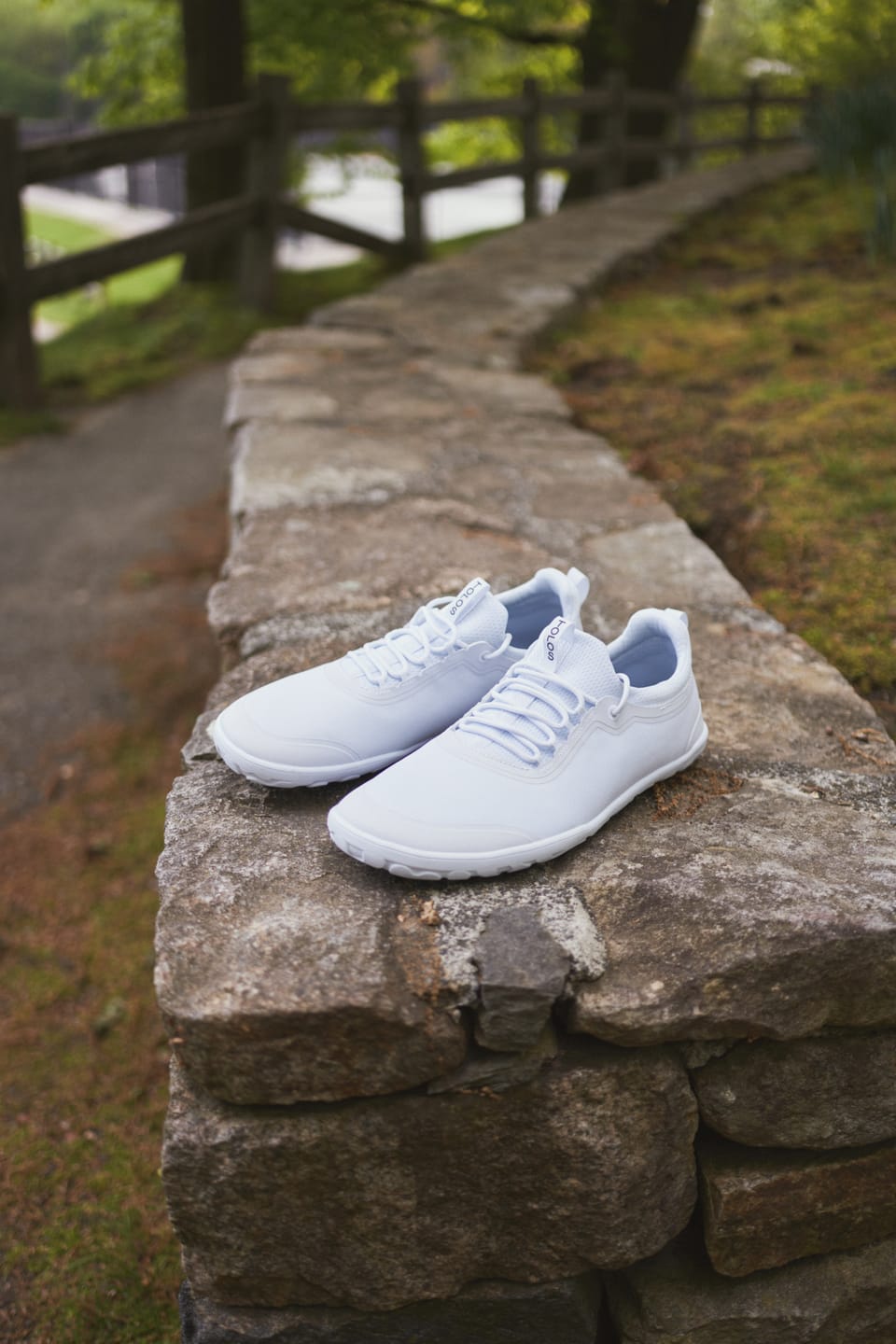Vibram Bikila EVO WP Review
Featuring a waterproof membrane, Ice Trek rubber, and a lace system, the Biklia EVO WP is Vibram’s first water-proof shoe! Based on the Bikila EVO platform, Vibram made many design changes for the WP to make it waterproof and relatively weather-proof…
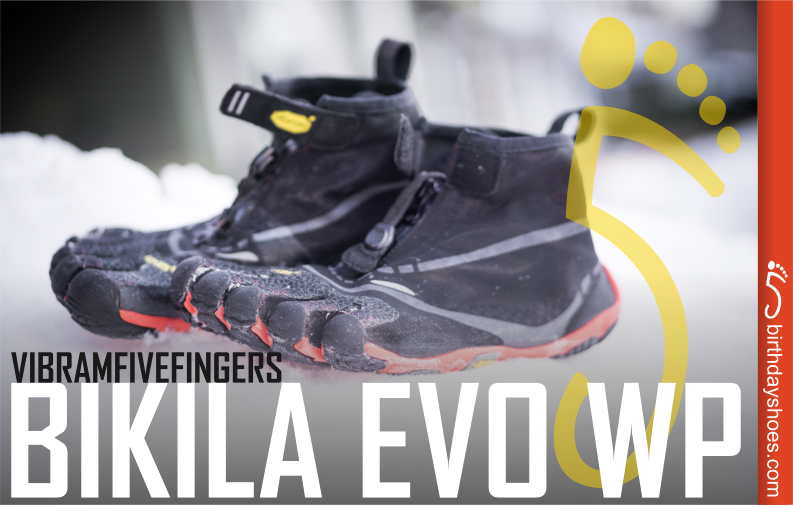
Featuring a waterproof membrane, Ice Trek rubber, and a lace system, the Biklia EVO WP is Vibram’s first water-proof shoe!
Based on the Bikila EVO platform (review), Vibram made many design changes for the WP to make it waterproof and relatively weather-proof for all your wet and winter-season running needs!
Read on for my thoughts on the Bikila EVO WP and its capabilities!
About the FiveFingers Bikila Evo WP
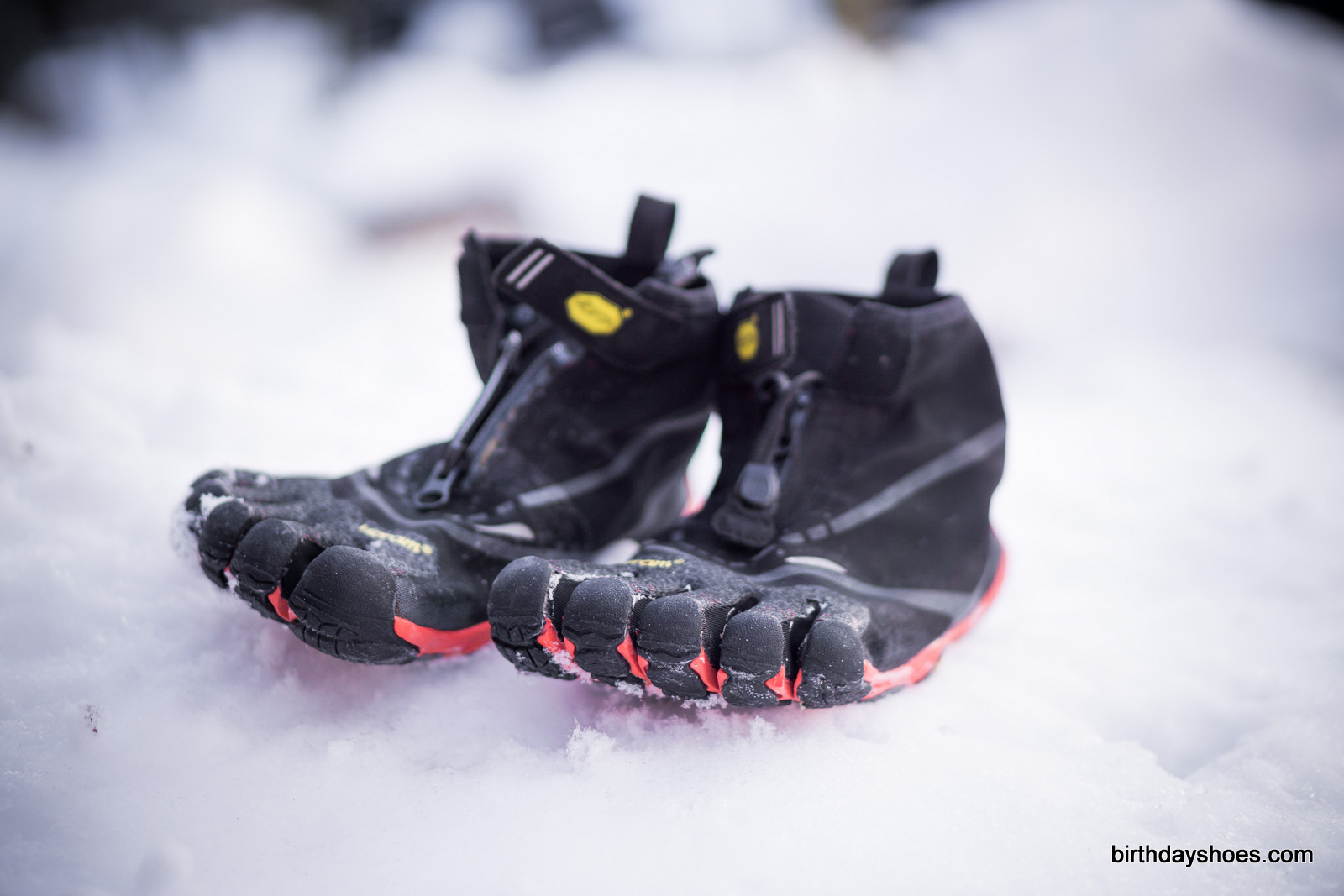
Here's what Vibram says about the Bikila EVO WP:
Weight — 5.9 oz
Total Stack Height — 8.5mm
Pros —
- Completely waterproof
- Grippy Ice Trek rubber
Cons —
- Tighter toe pockets
- Less flexible than the Bikila EVO
- Cold toes
Barefoot scale — With an 8.5mm sole, the Bikila WP is great for all kinds minimalist runners, from newcomers and experienced bare-footers alike. The sole is not as flexible as the standard Bikila EVO, but one of the thinnest waterproof shoes you can find on the market.
Take a spin around the Bikila Evo WP via this photos!
Sole
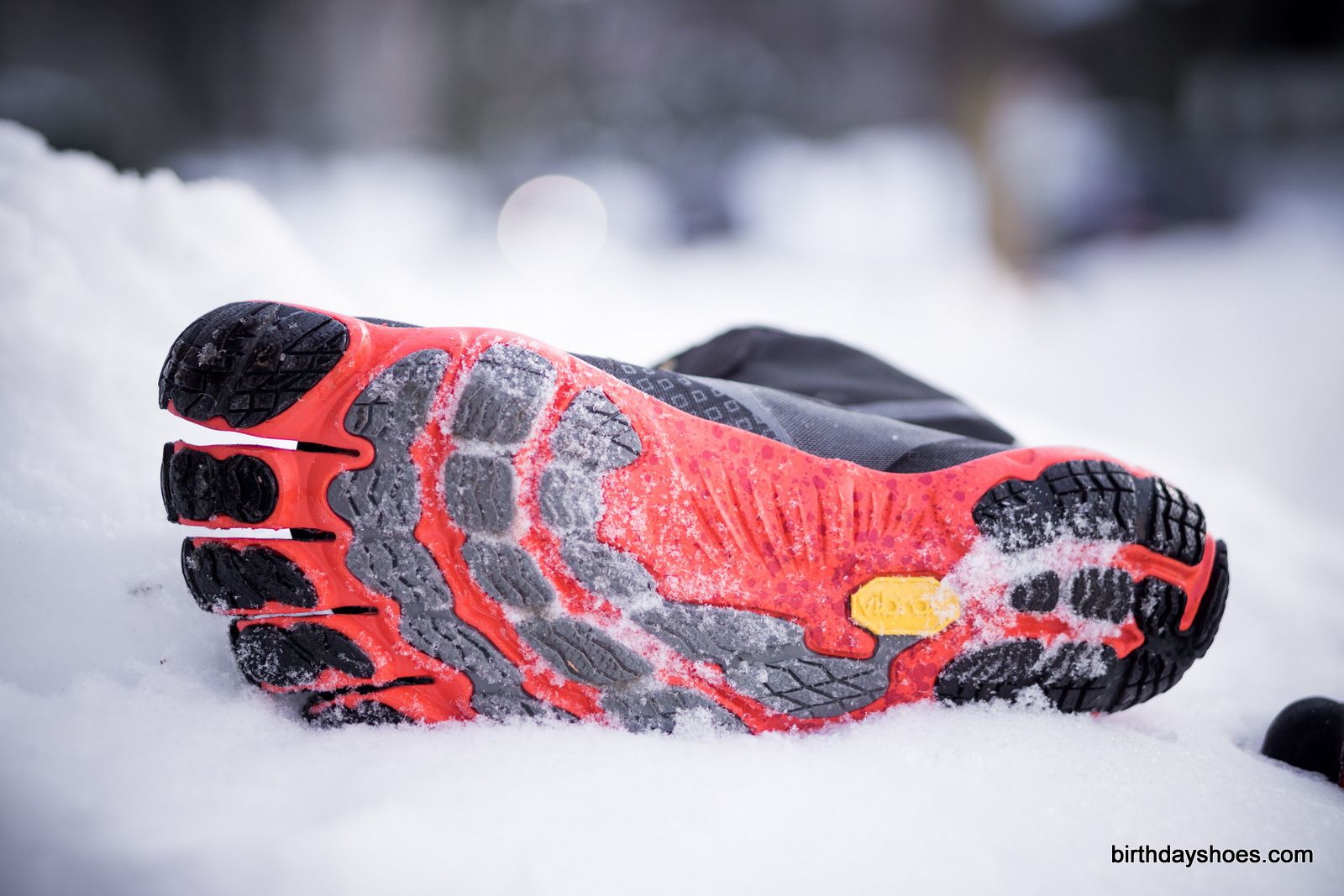
The Bikila WP uses an 8.5 mm sole that is similar to the Bikila EVO, which is comprised of 2.5mm of floating rubber pods Rubber, 4mm of Vibram EVA/Rubber and 2mm of insole material.
Unlike other Vibram models, the Bikila WP and Bikila EVO both feature rubber pods set on top of an EVA/rubber base. By placing the rubber in strategic areas and leaving the remaining sections with just EVA allows the Bikila EVO to be an ounce lighter than its predecessor, the Bikila LS, despite having a thicker sole overall.
This weight-saving design translates well to the Bikila WP as my pair weighs a mere 5.9 ounces, which in on par with my old Bikila LS running shoes—and that is with all of the extra waterproofing material, zipper, and a higher collar!
Unlike other running shoes, which rare expose their EVA foam, the Bikila EVO and WP feature bare EVA throughout roughly 30% of the sole. Clearly, this is no regular EVA.
Unlike traditional EVA, the EVA foam used by Vibram for their Bikila EVO and its WP variant is actually a hybrid EVA with some Vibram rubber mixed into the compound to enhance its durability, strength, and resilience to what would normally be a very fragile material. In doing so, both the Bikila EVO and WP are lighter and more flexible than their rubber-only counterparts and predecessors.
While this combination works great with the Bikila EVO, the WP does not quite have the same traits as its sister shoe. The WP sole is not nearly as flexible as the Bikila EVO from which its based upon--which is a shade more flexible than the Bikila LS that the EVO replaced.
Thanks in huge part to the horizontal flex grooves that are cut into the EVA/rubber sole, the Bikila EVO is able to perform a downward toe flex like some of its thinner brethren (The EL-X, KSO EVO, and Seeya are all able to flex up and down). Unfortunately, the same cannot quite be said for the WP.
While the WP has virtually the same sole design as the EVO, Vibram used more rubber in the EVA compound this time around and this made the EVA a bit stiffer than the EVO. Even with the same flex groves, you are not going to be able to flex your toes downwards.
Overall, the Bikila WP is about as flexible as the old Bikila LS.
Another difference in sole design from the EVO is the use of Vibram Ice Trek rubber on the floating pods. While the EVO had relatively smooth rubber pods for road running, the Bikila EVO WP has aggressive treads on its pods and a slightly nubby texture for enhanced grip in slippery conditions.
Here's a comparative photo of the EVO WP and the EVO:
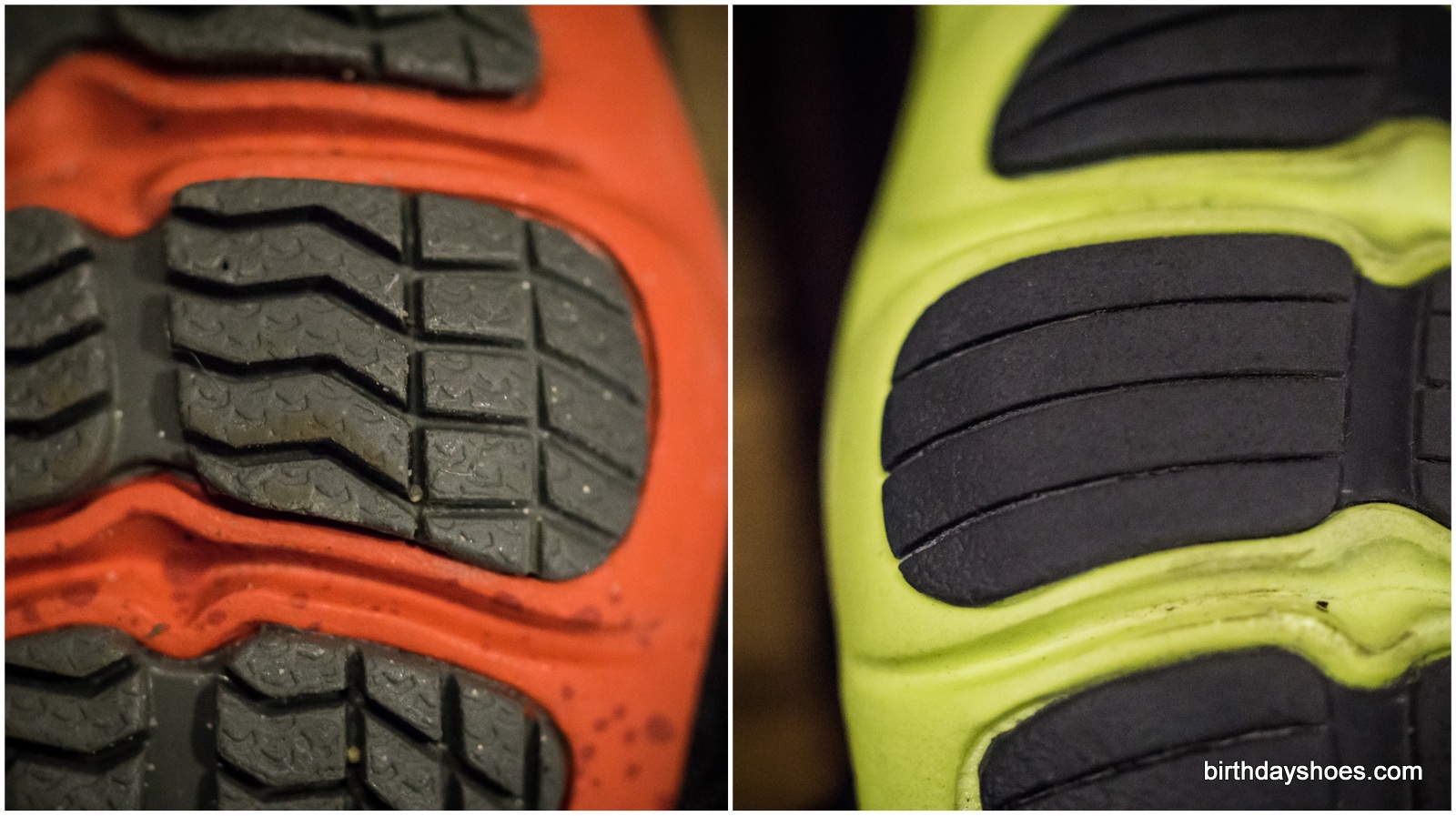
In winter testing through Winter Storm Juno in Boston, I found the Bikila WP to have exceptionally good grip compared to other running shoes, dedicated winter boots, and the Feelmax Kuuva 3 waterproof boot. The combination of aggressive treads in the Ice Trek rubber and the dexterity of a Vibram shoe gave me plenty of options of quick-footed movements on unsalted sidewalks, slippery bike paths, and the roads of Boston.
The enhanced feeling of confidence definitely made my winter runs more enjoyable and allowed me to run a great deal farther than I normally would have in the snow.
While I wished that the Bikila WP was as flexible as its EVO road-running counterpart, the combination of Ice Trek and better-than-average flexibility really makes the sole a winner for winter Vibram enthusiasts.
Fit and Materials
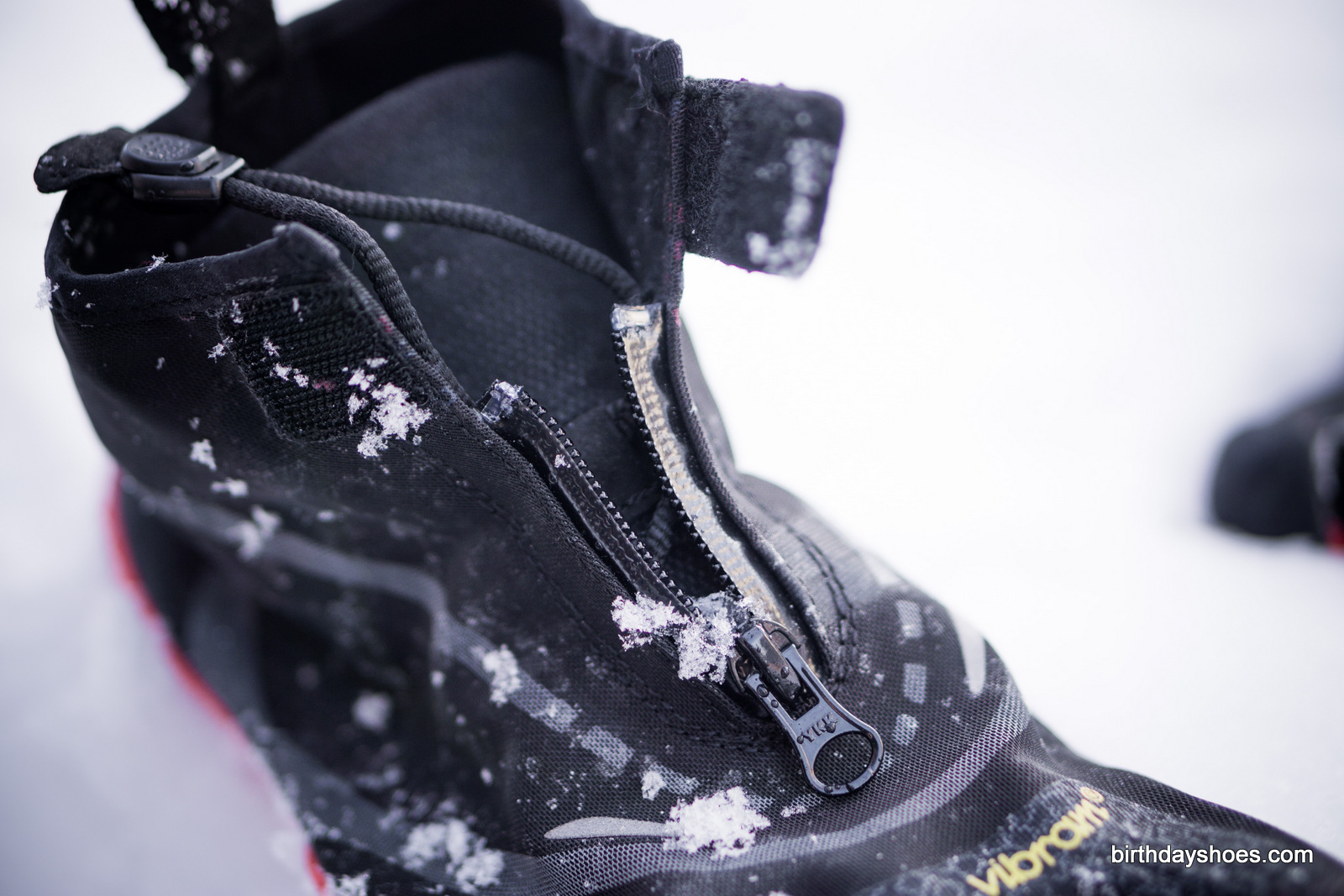
Okay, let’s get to the main draw of this shoe, its waterproofing.
The upper of the Bikila WP is a Tri-Layer Stretch Waterproof Membrane made comprised of a soft, velvety interior, a lightly-padded tongue, and a zippered membrane material that encases the lace-system and the rest the shoe.
In all of my testing, the WP was 100% waterproof. Snow, rain, and puddles are all a piece of cake for the waterproof membrane. The membrane works like a thin wetsuit for your foot, complete with a zipper that starts just short of the toe and up the short collar. The WP is waterproof from your toes to about 90% of the collar.
The interior of the Bikila WP is an incredibly soft lining fabric that is more comfortable than any other lining that Vibram has ever offered.
I found that getting my foot in the Bikila WP requires a little more time and care than other Vibrams. Once you get your toes into the Bikila WP, it becomes abundantly clear that the toe pockets are a little different than the Bikila EVO or any other VIbram shoe for that matter.
The Bikila WP’s toe pockets are very snug and may not fit everyone’s toes. In previous shoes, if the fit was not quite right, you can always size up or size down, but the toe pockets in the WP are going to be snug regardless of the fit, which may prevent some people from being able to enjoy the WP.
The wet-suit like membrane is somewhat stiff, so getting the shoe on takes a little while to edge your foot in and the higher collar may require some folding for some to get it in. Provided your toes fit in the pockets, once you get your foot into the WP, you can tighten the lace system, zip up the membrane, and Velcro everything together at the top.
With the Velcro strap in place, you can easily choose how watertight you want the Bikila WP to be. You can never quite form a waterproof seal around your ankle, but you can easily keep out most of the rain easily and comfortably.
The biggest issue that I have with the WP is that my toes would get cold pretty quickly during my runs. The uppers of the shoe and the waterproof membrane are quite thin, especially around the toes, and temperatures transfer very easily from the outside to the interior of the shoe. This can be remedied with wearing toe socks, but the toe pockets are so tight that you may not be able to!
Without socks, once you completely submerge your foot in snow, the toes do not stay warm for very long. The cold feeling is somewhat interesting because at first blush you may feel that the waterproof material is not doing its job. The immediate impression of connecting cold to wetness takes a little while to get over, but you do get used to it. Toe socks definitely make a huge difference, if everything fits.
Summary
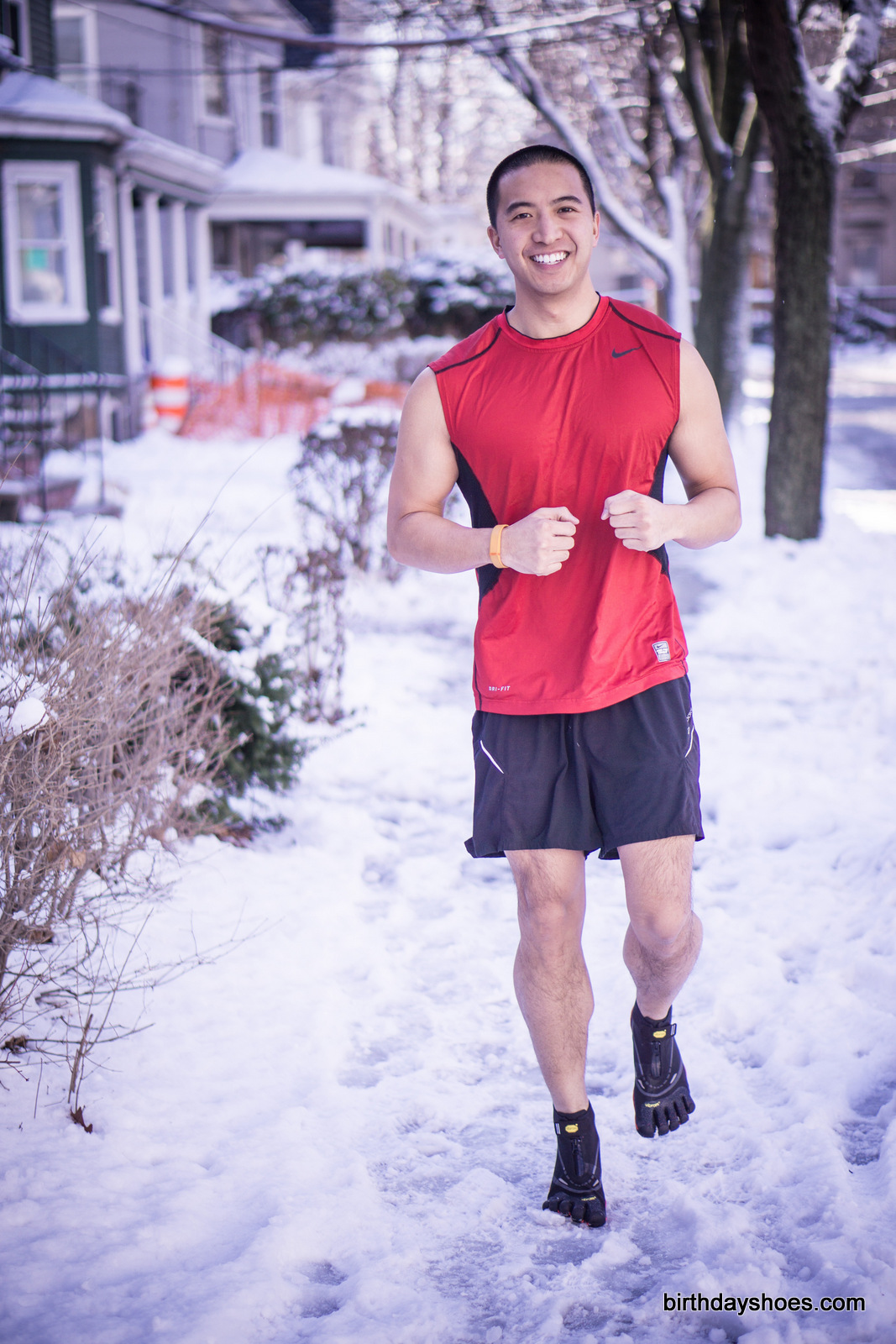
The Bikila EVO WP is a great shoe for Vibram-lovers who want to bring their runs to all seasons and conditions.
With its introduction, Vibram enthusiasts can now have a full lineup for trails, roads, fitness, water, and winter sports.
The Bikila WP is completely waterproof from toes to collar and gives you a fair bit of flexibility for good amount of ground feel. While it is not quite a flexible as the Bikila EVO that it shares its platform with, it is still very good for a waterproof winter shoe.
If your toes can fit into the WP with socks, you have a truly fantastic waterproof shoe for all your winter adventures. Without socks, you may find your toes getting cold, so assess your fit before you decide to finalize your purchase or find an online retailer that will allow for returns. And on that front, the Bikila EVO WP will set you back about $150.
Overall, the Bikila EVO WP is a great addition to the Vibram lineup and is a wonderful shoe for wintery conditions.
A huge thanks to Vibram for sending my the Bikila WP for review!

